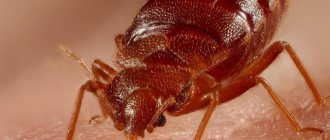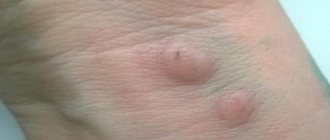Cats and cats are very clean pets. But sometimes cat owners may notice that the pet begins to shake its head and scratch its ears. This process can happen several times a day - and this is quite normal. However, if scabies intensifies, then this is worth paying attention to. Frequent and severe scratching of the ears can not only indicate the presence of a disease, but also cause discomfort and severe pain. In this article we will look at why cats have itchy ears, what diseases it is associated with and how to make a diagnosis. You will also learn how to treat pets and what preventive measures exist.
It's normal to scratch your ears several times a day.
Alarming symptoms
Healthy ears of cats are soft pink in color, clean, without damage or scratches. The skin inside is intact, there are no inflammations or ulcers. The ears should not have an unpleasant odor, and the coat should be uniform.
Healthy ears, pink and without damage
If a cat sometimes scratches its ears, then nothing bad happens, but you should pay attention and worry if a number of alarming symptoms appear:
- The cat scratches his ears a lot and often.
- The pet shakes its head violently.
- He tilts his head to the sides.
- The animal has become nervous and irritable and is hiding from its owners.
- Due to frequent scratching behind the ears or in the auricle, scratches and bald patches form.
- The outer ear takes on a red tint.
- The ears feel hotter to the touch than the rest of the body.
- When you gently press the organ, the cat experiences discomfort.
- The inside of the ears may become covered with a dark substance and smell unpleasant.
- Squelching sounds may be heard from the ear.
The cat's ears itch. Otodecosis.
The cat's ears itch. Otodecosis. Treatment. (812) 607-68-62
Suddenly you notice that your previously completely healthy cat has scratched its ear until it bleeds, what could be the reason for this behavior? The thought of some kind of infection immediately arises. There are quite a few ear diseases from which pets suffer, but we will look at one of the most common - otodectosis in cats, or ear scabies .
Causes The culprit of the disease is a small ear mite , which is difficult to see without a microscope - Otodectes cynotis, having settled in the auricle, feeds on lymph and skin flakes. This disease is not seasonal and can occur at any time of the year; the weather has little effect on the tick - the parasite in the ear feels comfortable at any temperature. Kittens aged from one to six months most often suffer from otodectosis, but adult animals with weakened immunity and poor living conditions can also get sick. Young animals become infected from their mother or from their peers during contact. If you do not get rid of the parasite in a timely manner, it can open the way to other pathogens: bacteria, fungi, which will lead to serious consequences. One of the dangerous complications with ear scabies is otitis media in cats .
Symptoms In the place where the ear mite , redness and swelling appear, exudate (liquid from small capillaries) is released, which mixes with sulfur and dead cells, as a result, almost the entire inside of the ear is covered with dark brown crusts. If you look into the auricle, you might think that earth has been poured there, the owner diligently cleans out the dirt, and it magically appears again in a few days. The mite lives in the ear, eats, and leaves behind waste, which leads to severe irritation and itching. If a cat had fingers like ours, then she would be able to scratch herself carefully, but she has to use a paw with sharp claws, so extensive scratching appears. During scratching, blood and lymphatic vessels are often injured, causing hematomas to form that can spread to the entire ear. A healthy ear is constantly inhabited by microorganisms that do not harm the animal, they protect it from dangerous microbes, but mites upset the existing balance, and as a result, harmful bacteria develop that cause otitis media (ear inflammation). With this complication, an unpleasant-smelling liquid will be released from the ear canal. When the disease progresses far, the inner ear may be affected, followed by the meninges, then the animal will have a high temperature and signs of a nervous system disorder (loss of orientation in space, vomiting). Let us repeat the main symptoms of otodectosis : crusts in the auricle, scratching, hematomas, discharge from the ear canal, fever, neurology.
Treatment and prevention Ear scabies can be easily treated with timely diagnosis, if the underlying disease is not burdened with complications. Control measures are aimed at destroying the parasite and cleansing the ear from wax and crusts. Anti-tick drugs are used in the form of drops, suspensions, powders and ointments. After the doctor prescribes the right medication and shows you the ear cleaning technique, you can then proceed on your own. Treatment for otodectosis takes on average several weeks. To prevent your pet from getting sick, regularly examine the ear and promptly consult a doctor if you have any suspicions. If you go to visit where there is a sick animal, then when you come home, change your clothes, hide your shoes and wash your hands thoroughly, and then communicate with your cat.
CONSULT A VETERINARIAN (812) 607-68-62
Hygiene problems
Excessive wax production occurs in some felines. This feature can be congenital or acquired. A large accumulation of this substance is the main reason why the cat flaps its ears and scratches them. Due to the structure of the auditory organ and canal, some cats may suffer from this ailment.
If you bathe improperly, a large amount of water can get into your pet's ear. To get rid of unpleasant sensations, cats begin to shake their heads and scratch their ears with their paws.
If the owner does not clean the cat's hearing aid, then the pet will simply accumulate dirt. This becomes a breeding ground for the emergence of pathogenic microorganisms.
A cat's sulfur plug is formed due to insufficient care or congenital
Causes and diseases that cause black plaque to appear
Insects and parasites most commonly cause ear infections—resulting in red, swollen, itchy, or blistering—either as a result of direct damage from a parasite bite or as a result of increased sensitivity. It is because of parasites that black dots most often appear in a kitten’s ears.
Checking a cat's ears
Otodectosis or ear scabies
Scabies is caused by microscopic mites. There are several types of mites that cause it. One of the most common types of inflammation of the external auditory canal (otitis externa) in cats is otodegitosis caused by Otodectes cynotis mites. Mites infect the skin and ears, and signs of their appearance include black dirt in the cat’s ear, redness, partial hair loss, itching and general inflammation of the skin.
Adults live for about 2 months, during which time they reproduce continuously. Despite the fact that their entire life is spent on a host animal, they can survive in the environment for some time.
Formation of sulfur plugs
Although most cats do not develop ear wax, it does sometimes happen. If you see dark accumulations of wax that also stink, this indicates a painful condition, such as a yeast or fungal infection, ear mites, or other irritations in the ear. If your cat's ears look healthy, have pale pink skin and light brown earwax, this is normal.
Earwax itself is normal in a cat, but if you see that your cat has a dark coating in his ear and is also shaking his head and scratching his ears, he most likely has ear mites.
If there is too much wax, it can clog the ear canal and lead to inflammation. To prevent this from happening, you need to carefully clean your cat's ears every month. It is best to do this with a special lotion, which is sold at a veterinary pharmacy. If the condition is advanced, be sure to contact your veterinarian.
Scabies mite
Appearance of an ear mite
Mites can cause irritation where they attach and can be found on the pinna or in the ear canal. Ear mites are a fairly common parasite in pets. Ticks are microscopic and infectious organisms that appear as tiny white dots, barely visible to the naked eye. They can be detected under a microscope. Ear mites live on the skin of the ear canal and feed on earwax and sebum. They not only cause infection, but can also cause allergies in the animal.
Ear diseases that cause itching in cats
The structure of the auditory organ in cats is different from that of humans. A cat's ears consist of three parts: outer, middle and inner.
The outer one consists of the auricle and the ear canal. These parts are longer and more voluminous than ours.
The middle of the eardrum and a chamber that is filled with air and contains three small bones, two muscles, the oval window and the eustachian tube.
The inner ear has a complex structure. It includes the organ of hearing itself and the organ of balance, that is, the vestibular system.
Hearing aid for cats
Unpleasant and even dangerous diseases can damage all parts of a cat’s ear and should not be ignored.
Otodectosis or ear mites
The most common disease caused by a microscopic mite. Most often found in kittens. Its causative agent is a microscopic parasitic mite up to 0.5 mm in size that first settles in the external auditory canal. It gnaws through the delicate skin of the ear canal and feeds on the lymph that is released from the wounds. This causes severe itching in animals.
Otodectosis caused by a tick
Symptoms:
The pet shakes its head, rubs its ears on the furniture, scratches them, accumulations of dark sulfur, purulent discharge, and an unpleasant odor appear in them. But similar symptoms can be observed in other diseases.
Infection with this disease occurs through contact with animals. Some mites crawl to the surface of the body, where they live for up to a month, feeding on exfoliated skin particles. Flea collars offer little protection against ticks. Therefore, infection most often occurs in the summer, when the pet can spend a long time in nature and come into contact with other animals.
Outdoors, with high humidity and changing temperatures, ticks die in 4-5 days. And they live on the floor in the house for up to a month. Therefore, your pet can become infected while visiting a place where there is a cat or dog that suffers from otodectosis, even without contact with them. Ticks travel well on shoes. They can be picked up in the stairwell where stray animals live. The tick is also carried on the hands of a person who has petted a sick animal.
Mechanical damage (hematoma) and ear abscess
Trauma to a cat's ear canal can be caused by objects stuck in the ear. Tissue damage can also occur if the paws are scratched for a long time. A hematoma (lymphoextravasation) appears, leading to inflammation.
A whiskered ear can be injured during a fight with other felines, hit during play, collide with a moving obstacle, and for many other reasons. A hematoma can be distinguished by the following signs: the ear swells, sag or fits tightly to the head. The temperature at the injury site rises, and blood accumulates under the skin. The organ hurts when touched. The cat may lose its appetite. The animal tilts its head towards the damaged ear.
Hematoma of the auricle as a complication of otodectosis most often develops in cats. If the ear is frequently injured when trying to scratch it, a blood or lymphatic vessel may burst. In this case, a hematoma also forms.
If the tumor in the ear is filled with pus, then the animal is confirmed to have an abscess. An abscess is a purulent inflammation of tissues with their melting and the formation of a purulent cavity.
Otitis
Many purebred cats, due to the structural features of the auricle (for example, Scottish Fold, etc.), are prone to developing chronic forms of otitis media. Other breeds often have a congenital narrow ear canal, which can cause ear diseases and their transition to a chronic form.
Fold-eared individuals are prone to chronic otitis media
Otitis media also occurs due to exposure to water or if the cat has been lying in a draft for a long time. In addition, otitis media can occur due to ear parasites.
The symptoms of otitis media are similar to otodectosis. Discharge of purulent exudate is observed. On the ear you can see brown discharge in the form of small crumbs.
This disease is also accompanied by severe inflammation of the middle ear, increased body temperature, and decreased immunity.
Why does a cat shake its head - the main reasons
A cat may shake its ears and scratch them for several reasons:
- development of ear scabies (locally in one or both ears);
- extensive tick-borne infestation of the entire body (demodex, notoedrosis);
- injury or abscess formation (purulent inflammation);
- penetration of small insects or their larvae into the ear;
- entry of a foreign body;
- proliferation of bacteria or fungi;
- an allergic reaction, which is expressed by active itching in different places;
- flea dermatitis (flea bites cause irritation and itching);
- narrowing of the ear canal (neoplasms, inflammatory nodules);
- dermatitis in the ear area.
Sometimes owners may notice that the cat occasionally jerks its head, but its ears remain clean. This is a consequence of neurological disorders or genetic abnormalities.
Ear mites (otodectosis) in cats
Otodectes is a disease caused by the parasitism of the microscopic mite Otodectes cynotis in the ear canal.
A pet becomes infected with ear mites through close contact with sick cats and dogs. Clinical signs of the disease are:
- intense itching in the ears, redness of the skin;
- accumulations (dark color) inside the ear of mite waste products;
- unpleasant odor from the ears;
- the cat tilts its head towards the sore ear or presses its ears.
Important! The disease requires treatment, as it can lead to perforation of the eardrum and deafness, the formation of hematomas, and the spread of inflammation to the inner ear and membranes of the cat’s brain.
Notoedrosis
This disease is similar to otodectosis, but damage by microscopic mites (Notoedres cati) is observed locally or extensively over the entire surface of the cat’s skin, including the ears. Ticks, which are less than 0.5 mm in size, bite through the stratum corneum of the skin, penetrate deep into the epidermis and make tunnels for themselves in which they live and reproduce. This process is what causes severe itching in cats.
The disease first affects areas on the head and ears, then moves to the neck, chest, abdomen, and limbs. Cats intensively scratch their ears and sides with their claws, leading to the formation of bleeding wounds, which form crusts during the healing process.
As a rule, hair falls out in the affected areas. The cat's condition is gradually deteriorating, his appetite is decreasing, he is sleeping poorly, and is constantly itching.
If left untreated, the disease can affect the entire surface of the cat’s body, depriving it of hair and severely spoiling its appearance.
Demodicosis
Another parasitic disease of cats and cats, caused by the reproduction of mites of the genus Demodex on the skin. In most cases, lesions are observed throughout the cat's body, including on the ears. Since there are two types of the disease (due to two types of ticks), the clinical picture may vary.
When Demodex cati is infected and actively reproduces, cats develop signs similar to notoedrosis. The disease occurs when the cat’s immunity is weakened, since this mite normally lives on the surface of the skin of all healthy creatures.
As soon as the body weakens, mites begin to become active and typical demodicosis develops (scratching of the affected areas of the body, alopecia). It is not contagious to cats, dogs or people.
The second form of demodicosis develops when infected with the Demodex gatoi mite from a sick cat through close contact. This dangerous disease spreads quickly, and the pet becomes bald without signs of itching or sores.
Important! Treatment of all forms of demodicosis in cats is a long process that requires patience from animal owners.
Otitis in cats
Otitis is called inflammation of the ear. The disease is often secondary and is a consequence of the development of a fungal infection in the ears of cats, ingestion of subcutaneous mites, allergies, and injuries.
The disease is dangerous because it can spread to the middle and inner ear and lead to the development of meningitis in a cat.
Signs of otitis media:
- the cat often shakes its head;
- presses one or both ears;
- scratches the ear until it bleeds, causing deep abrasions;
- the appearance of an unpleasant odor from the ears;
- gurgling sounds in the ears, liquid purulent discharge;
- hearing impairment;
- change in appetite (tendency to eat soft and liquid food, as it is painful for the cat to chew dry food);
- soreness of the ears, which is expressed when touched or stroked;
- redness of the skin inside the ears;
- enlargement of nearby lymph nodes.
Otitis media causes a lot of unpleasant sensations for a cat, which is why an active, cheerful pet becomes passive. The disease is highly treatable, especially since the choice of medications (drops, gels, ear ointments) is huge.
Hematoma on a cat's ear
A hematoma is a painful swelling that is formed as a result of damage to a blood vessel and blood leaking under the skin. Appears with mechanical damage, injuries, falls.
Bruises on the ears and head of cats can be closed (without blood coming out) or open.
With closed hematomas, cats experience head twitching, pain, and pinching of the ears. If the lesion is small and not infected, other than applying cold and preventing the claw from opening the cavity, nothing needs to be done.
Large ear hematomas cause severe anxiety to animals, which is why the cat can damage them when scratching, which subsequently leads to bacterial contamination and suppuration. Open hematomas often turn into an abscess.
Wax plug in a cat's ear
Earwax is designed to protect the middle ear from the entry and growth of bacteria. With insufficient hygiene and excessive production of ear secretions, wax plugs can form in cats.
If they are not removed in time, the ear canal becomes blocked. The accumulated secretion irritates the walls of the organ, pain appears, the cat shakes its head and scratches its ears with its hind paws. Gradually the process worsens and hearing weakens.
The best way to solve this problem is to clean the ears with special lotions that dissolve wax.
Algorithm for cleaning a cat's ear:
- place a few drops of warm lotion in the ear;
- massage lightly;
- Wipe the outer part of the ear with a cotton swab dipped in lotion.
If special ear sticks with lotion inside were purchased for this purpose, then before the hygiene procedure you need to break the stick (the liquid will flow to the cotton side) and wipe the cat’s ear. Use the dry tip of the stick to remove wax plugs in the ear.
Allergies are one of the reasons why a cat scratches its ears.
Allergic itching of the parotid area (when the cat constantly scratches clean ears) is a fairly common phenomenon in cats.
Allergies in cats can be caused by:
- flea infestation and hypersensitivity to flea saliva;
- food intolerance to food components (for example, chicken);
- burning in the ear after using medicinal drops, if there is resistance to medication.
To diagnose and determine the cause of itching in the ears, the doctor must conduct a smear microscopy and rule out parasitic, fungal and bacterial diseases. If the cat's ears are clean, a detailed survey of the owner is conducted about the diet, the presence of allergic reactions to chemicals, and a detailed examination of the animal's coat.
Foreign body in a cat's ear
In the process of sorting out relationships and fighting, there are often cases of foreign bodies (stones, earth, wood chips) getting into the ears of cats. When a foreign agent penetrates deeply, the animal cannot get rid of it on its own.
From the outside it looks like shaking the head, because the cat's ears itch due to constant irritation of the walls of the ear canal by a foreign body.
The only possible way to alleviate the animal's suffering is to show the cat to a veterinarian, he will remove the foreign object from the ear and prescribe anti-inflammatory drops.
Injuries
Another problem that accompanies street fighting cats is abscesses of the ears and cheeks. An abscess is a cavity filled with pus that forms when a wound becomes infected during the healing period. Cat wounds and scratches received during a fight become infected with dirty claws.
After a few days, the wound heals, but the process of reproduction of pathological bacteria continues and pus is formed.
Clinical picture:
- the appearance of a painful swelling on the cat’s ear or cheek;
- gradual enlargement of the cavity, hot and red surface of the skin on the outside;
- spontaneous opening of an abscess (as a result of the cat constantly scratching the sore spot);
- discharge of foul-smelling pus from the wound, wet fur around the ear.
If the purulent process is localized in several places or has a large surface, then the cat experiences severe pain, may tremble and take unnatural positions.
Opening the purulent cavity is a mandatory process for successfully curing a cat. If the wound is cleared of pus on its own, then it is necessary to wash it with an antiseptic and treat it with wound-healing ointments. For large cavities, drainage is installed.
Neoplasms
Ear tumors are rare in cats. This disease mainly affects older cats with chronic ear diseases. Due to the hidden nature of the process (tumors often grow inside the ear canal), owners usually notice the problem in the later stages, when the tumor blocks the ear canal and puts pressure on the inner walls of the ear.
When examined by a veterinarian with a complaint that the cat scratched its ears and they began to bleed, a large neoplasm is often discovered that requires surgical treatment.
How can you suspect the growth of a malignant tumor in a cat’s ear:
- sharp putrid odor in the ear area;
- hair loss around the tumor growth area;
- change in the position of the auricle, deformation;
- deterioration of the cat’s health (if the tumor is destroyed);
- discharge from the ear (bloody, cloudy, brown);
- deterioration of the cat's hearing;
- scratching one ear.
Important! If such symptoms appear in a cat over 7 years old, you should contact a veterinary clinic; an oncologist will determine the degree of malignancy of the ear tumor and prescribe treatment.
Neurological diseases in cats
The appearance of a new animal, a small child in the house, a change of place of residence and environment is always stressful for domestic cats. As a result, some pets may remain in a state of discomfort for a long time.
Not knowing how to overcome the problem, animals begin to scratch areas of the body (including ears) until large alopecia appears. The process can continue for months, causing the cat to look worse every day.
This neurological behavior can be corrected with the help of cat pheromones (Feliway diffuser from Ceva), through long-term use (up to 1 year).
Ear dermatitis
This disease is a skin reaction, namely inflammation, redness and itching of the skin, due to which the ears of cats itch, to any irritant. In other words, an allergy appears. Some veterinarians believe that allergies are hereditary.
The development of allergic dermatitis can also lead to:
- Bad ecology.
- Food intolerance.
- Bronchitis.
- Asthma.
- Disorders of the liver and digestive tract.
Allergic factors:
- Detergents and household chemicals.
- Some medications.
- Pollen.
- Allergy to flea secretions (ectoparasites).
Allergies also include vomiting, diarrhea, swollen extremities, watery eyes, red eyes, coughing and sneezing.
Ringworm, fungal infections
Skin lichen appears due to various fungi. Infection of the auricle with fungi leads to the development of inflammation. Acquired otitis caused by fungi of the Malassezia genus is common. These microorganisms are part of the normal microflora, but if immunity is reduced, fungi are activated, causing itching.
Ringworm appears due to free exercise, poor diet, immunosuppressants, helminthic infestation or cancer.
Symptoms of the disease are hair loss, peeling, irritation, inflammation, spots on the skin with clear boundaries, on which blisters or pustules may be located.
Ringworm is accompanied by irritation and hair loss
There is also pink (shingles) lichen, which is allergic in nature.
Foreign object in the ear
A cat may scratch its ears if it is bothered, for example, by a piece of grass or some other foreign object. You need to carefully pull it out. If the object resists or the cat is not comfortable, you should consult a doctor for safe removal.
Seborrhea
Seborrhea begins when the functions of the sebaceous glands are disrupted. With dry seborrhea, a large amount of dandruff and itching appear on the animal's fur.
Seborrhea causes a lot of dandruff
The pathology can be congenital or caused by hormonal disorders, thyroid problems, scabies, and dermatitis.
Problem for small kittens
Kittens can develop any of the listed diseases, but the most common is otodectosis.
Kittens are exposed to many diseases, especially otodectosis
Due to the pain, the kitten may meow loudly, shake its head, or itch. If purulent discharge appears, immediately take the kitten to the veterinarian, otherwise meningitis or even death is possible.
Diagnostics
If your cat has itching in the ear area, do not ignore it under any circumstances. Diagnosis of the cause requires a thorough examination.
Using an otoscope, veterinarians carefully examine the ear inside and outside. Otoscopy helps to understand whether the eardrum is intact, the presence of exudate and the degree of inflammation.
Ear examination is performed using an otoscope
A smear is taken from the damaged area for examination under a microscope. When otitis has developed, diagnosing ear mites becomes difficult, because... living individuals die in an acidic inflammatory environment, and microscopy does not give an accurate result.
Having made a diagnosis, the doctor prescribes therapy that can be carried out at home.
If an allergy causes itching, a procedure is performed to determine the protein causing the reaction. Eliminating the allergen brings the body back to normal.
How to treat
- Treatment of the wound if the cat scratched its ears until they bled.
A cold compress from a decoction of soothing herbs should be applied to the combed or scratched area, disinfected with a decoction or tincture of calendula, which does not contain alcohol, and finally smear the area with Levomekol ointment. Treatment is necessary not to eliminate the wound, but to eliminate the cause. Drugs such as Suprastin or Diazolin help relieve itching.
- Dermatitis and allergies cannot be wetted, so acetylsalicylic acid-based talkers are used to treat them. In case of food allergies, it is necessary to change the food and eliminate irritating factors.
- Treatment of otodectosis.
Includes the use of special drugs against ticks, antibiotics in the presence of a purulent infection and the prevention of further infection. Before treatment, you need to thoroughly clean the animal’s ears of any secretions to ensure better penetration of the drug into the ear. After careful treatment of the external auditory canal, medicinal drops are instilled into the ears.
For the best effect, you should not only instill the drug, but also massage your ear.
Preparations such as amitraz (e.g. “Amitrazin”, “Tsipam”, etc.), hexachlorane (“Aurikan”), as well as preparations for acaricidal and insecticidal treatment of farm animals (“Neostomozan”) are effective in destroying ticks. Most drugs cannot be used for pregnant and lactating animals, as well as for kittens.
Also, drops on the withers (“Frontline”, “Stronghold”, “Bars”, etc.) are successfully used to treat ear mites. These drops are used only to kill ticks, but not to treat otodectosis.
- Hematomas and abscesses.
Small hematomas usually go away on their own within a few days. Large and pulsating lesions require surgical intervention.
An ordinary hematoma needs to be cleaned and rinsed with hydrogen peroxide to disinfect. Before doing this, remove the hair from the painful area.
But in case of any suspicion or illness, you should not prescribe therapy yourself, as you can waste time and trigger the disease. You can help your pet at home if the problem of anxiety is known for sure.
Why does a cat scratch its ears?
If your cat scratches its ears constantly, it means it is experiencing itching or pain in the ear area. You may also notice that the cat shakes its head, especially if you stroke its ears. Scratching is often found in the head and neck area. For effective treatment, it is necessary to find out the cause of the itching.
The most common cause (more than 50% of cases) of external otitis in cats is otodectosis (“ear scabies”), a disease that occurs due to parasitism of the microscopic mite Otodectes cynotis in the external auditory canal. The disease can be successfully treated with antiparasitic drugs, but is highly contagious, so all cats in contact must be treated at once.
More rare causes of otitis externa in cats are the development of bacterial and/or fungal inflammation. These diseases, as a rule, occur secondary to the underlying disease (otodectosis, allergies, trauma to the skin of the ear canal due to improper cleaning of the ears). Bacteria and fungi are always present on the skin, but due to the skin's protective mechanisms, they cannot overgrow. In the presence of predisposing factors, bacteria and fungi begin to multiply rapidly, causing inflammation of the ear. For diagnosis, a smear of discharge is taken. Treatment depends on the identified microflora - complex anti-inflammatory ear drops are usually prescribed. The course of treatment takes 7-14 days.
A cat may scratch its ears as a result of general itching associated with allergies or fleas. In this case, scratches are also found in other places - on the neck, in the sacral area, on the hips. In case of allergies, it is necessary to carry out diagnostics to identify the allergen. If fleas are present, antiparasitic treatment is carried out - bathing with antiparasitic shampoo, followed by treatment 3 days later with drops on the withers (spot-on) against fleas. It may be necessary to prescribe anti-itch medications (antihistamines, corticosteroids).
Often the causes of ear itching in cats are skin irritation due to improper ear cleaning and/or the use of inappropriate medications. It is also possible the presence of a foreign body or the growth of a neoplasm (tumor) in the external auditory canal.
In case of severe itching, in addition to the main treatment, you need to put a protective plastic collar on your neck to prevent scratching.
If your cat scratches its ears, you should seek help from a veterinarian to identify the causes of the itching and prescribe effective treatment.











